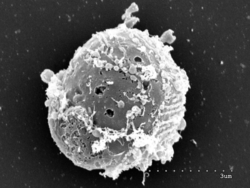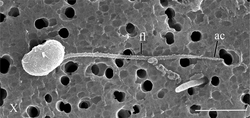| Pluriformea | |
|---|---|
 | |
| Corallochytrium | |
 | |
| Syssomonas | |
| Scientific classification | |
| Domain: | Eukaryota |
| Clade: | Amorphea |
| Clade: | Obazoa |
| Clade: | Opisthokonta |
| Clade: | Holozoa |
| Clade: | Pluriformea Hehenberger et al. 2017 [1] |
| Genera | |
Pluriformea is a sibling clade of the Filozoa, and consists of Syssomonas multiformis and the Corallochytrea. Together with the Ichthyosporea and the Filozoa, they form the Holozoa.
An up to date cladogram is [2] [3] [1] [4]
The alternative hypothesis is the Teretosporea clade.